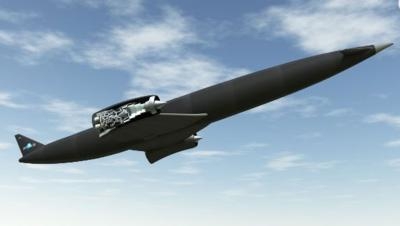Sat, Jul 06, 2013
SABRE Hybrid Engine Project Mentioned In Spending Review
New life was breathed into an advanced hybrid jet engine project under development in the U.K. in the Chancellor of the Exchequer's spending review delivered to the British Parliament last week.

Chancellor George Osborne specifically mentioned the SABRE program in his speech, who pledged to fund such high-technology and, in his words, "high-priority" projects, though he did not give any details.
SABRE stand for Synergistic Air-Breathing Rocket Engine. SEN TV reports that it is under development by a company called Reaction Engines based at Abingdon near Oxford in the U.K. In a news release from 2010, the company called the technology "game changing." According to the release, the SABRE engine is capable of operating as a jet engine and a rocket engine, powering aircraft at up to five times the speed of sound within the atmosphere or directly into Earth orbit at twenty-five times the speed of sound. Its ground-breaking technology – an air pre-cooler - is designed to cool continuously the incoming airstream from over 1,000°C to minus 150°C in less than 1/100th of a second (six times faster than the blink of an eye), effectively doubling the current technical limits of jet engine speeds.
The engine is being developed for a vehicle dubbed Skylon, described as an unpiloted, reusable single stage to orbit (SSTO) space plane "that will provide reliable access to space and be capable of delivering payloads of up to 16 tons into Low Earth Orbit (LEO, approximately 186 miles in altitude) at about 1/50th of the cost of traditional expendable launch vehicles, such as rockets. SKYLON’s SABRE engines use liquid hydrogen combined with oxygen from the air at altitudes up to 16 miles and speeds of up to Mach 5 before switching over to on-board liquid oxygen for the final stage of ascent."
SEN TV says that the company eventually plans to create a version of Skylon that could transport astronauts to the International Space Station. They also envision an airliner, LAPCAT, that could fly from Europe to Australia in just over four hours.
(Skylon image provided by Reaction Engines)
More News
From 2023 (YouTube Version): Legacy of a Titan Robert (Bob) Anderson Hoover was a fighter pilot, test pilot, flight instructor, and air show superstar. More so, Bob Hoover was an i>[...]
Get The Latest in Aviation News NOW on Instagram Are you on Instagram yet? It's been around for a few years, quietly picking up traction mostly thanks to everybody's new obsession >[...]
Aero Linx: B-52H Stratofortress The B-52H Stratofortress is a long-range, heavy bomber that can perform a variety of missions. The bomber is capable of flying at high subsonic spee>[...]
Altimeter Setting The barometric pressure reading used to adjust a pressure altimeter for variations in existing atmospheric pressure or to the standard altimeter setting (29.92).>[...]
"Knowing that we play an active part in bettering people's lives is extremely rewarding. My team and I are very thankful for the opportunity to be here and to help in any way we ca>[...]
 Classic Aero-TV: Remembering Bob Hoover
Classic Aero-TV: Remembering Bob Hoover ANN FAQ: Follow Us On Instagram!
ANN FAQ: Follow Us On Instagram! ANN's Daily Aero-Linx (05.15.24)
ANN's Daily Aero-Linx (05.15.24) ANN's Daily Aero-Term (05.15.24):Altimeter Setting
ANN's Daily Aero-Term (05.15.24):Altimeter Setting Aero-News: Quote of the Day (05.16.24)
Aero-News: Quote of the Day (05.16.24)



